One of the biggest advantages of using Microsoft Teams is the ability to collaborate with colleagues across the entire organization. This includes file sharing as well as document management. In fact, you can store your organizational files and work on documents in real-time without leaving Microsoft Teams environment. At the same time, you should have an efficient system of file management in order to avoid mess and duplication. In this article, we will describe how to easily build Power Automate flows to automate and improve your file management.
Take advantage of file management in Microsoft Teams
First, let’s quickly describe the benefits of managing files in Microsoft Teams.
Automate data management and file sharing
When you store and share your files in Microsoft Teams, you can improve your team collaboration. Hence, your colleagues can edit and view files, leave comments and start conversations in one place.
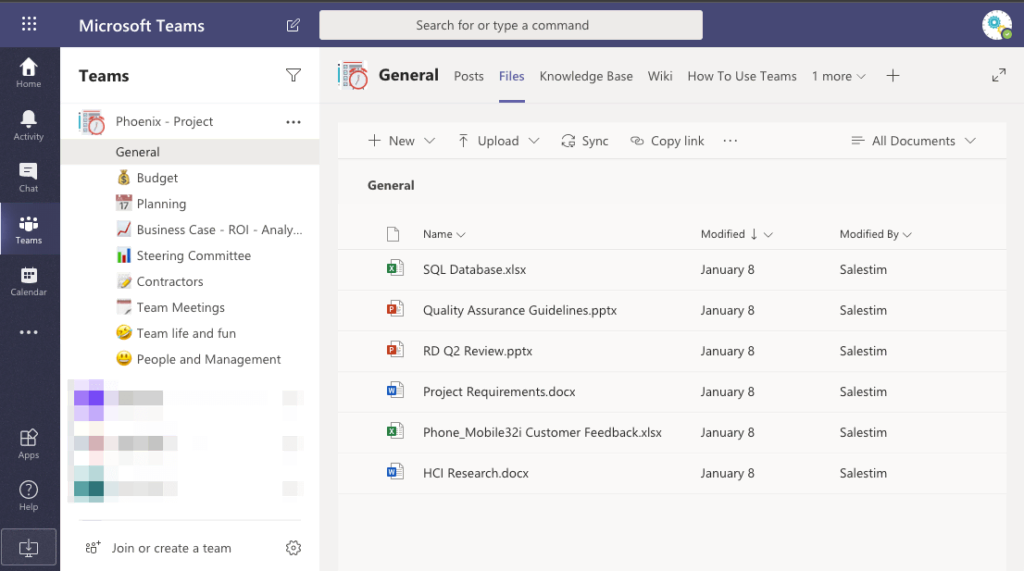
Moreover, with automation you’re able to set up approval processes, manage data, automatically move files, and so on. This will simplify your daily activities and reduce the time spent on performing manual tasks.
Avoid duplication and structure your Teams environment
As you may know, Teams files are stored in your SharePoint environment. Thus, each team in Microsoft Teams has its own SharePoint site that serves as a document library for that team. This feature allows you to structure your Teams environment and document library by creating different folders and uploading files into the different channels according to your use case.
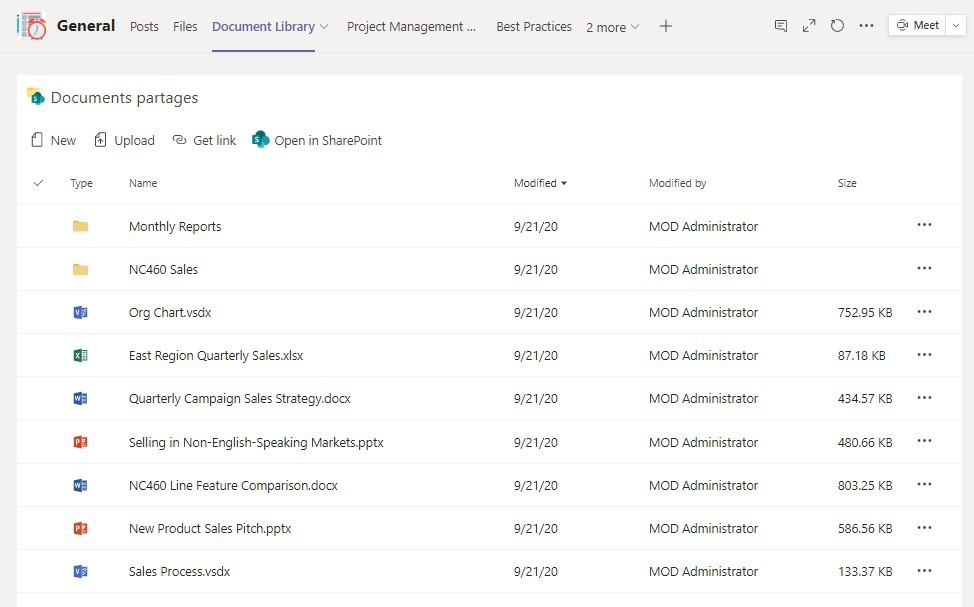
Learn how to create teams from the template with cloned files and folders
And therefore, we will build Power Automate flows using the SharePoint connector where you can define a unique site address to apply automation for any Teams document library.
Improve search experience and boost productivity
When you have an accurate file management system, it’s easy to search for the right file in Microsoft Teams. Moreover, with Power Automate you can streamline the process of creating, sharing, and storing team’s files that leads to the increased productivity and better Teams end-user experience.
File management with Teams and Power Automate – ready-to-use flows
Now, let’s discuss some common use cases you may face during file management in Microsoft Teams. Rest assured, we will show the Power Automate flows that you can easily repeat and improve your file management system at scale.
Move documents between SharePoint Libraries
To avoid mess and duplication in Teams, you will need to correctly manage your documents storage. You should manage tons of documentation across different folders, channels, and teams. Yes, this isn’t an easy deal! But let’s simplify this process a little bit by building a flow that allows you to automatically move documents from one folder to another.
Suppose, you manage contracts and agreements from the external agents, and you need to separate them between those that are signed or the ones that aren’t. Let’s say your sales reps create new contracts into the “Contracts – to be sent” folder. Once this document was sent and signed, it should be stored in the “Contracts – signed” folder to avoid chaos in Teams.
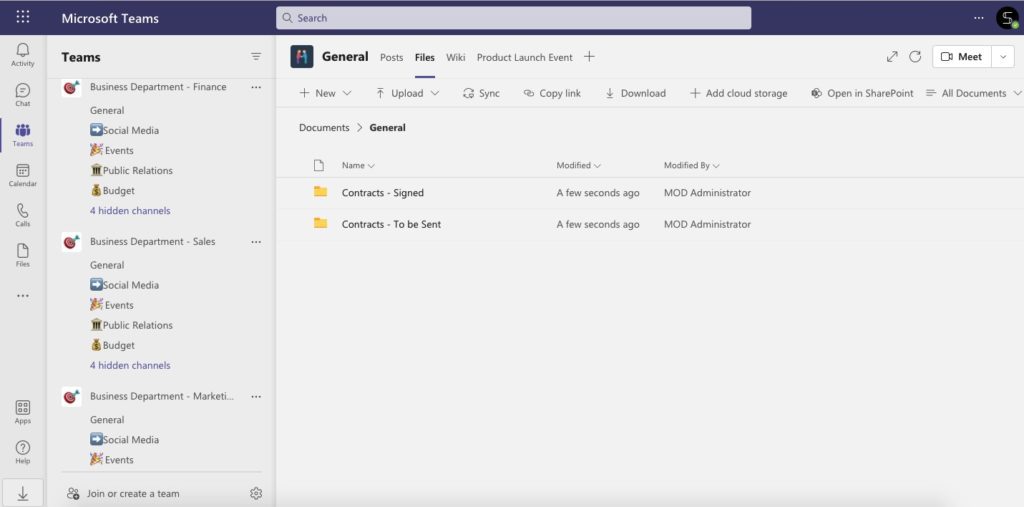
Let’s build a Power Automate flow to move these contracts automatically.
First, you will need to add a new column into your SharePoint library where your colleagues should manage document status.
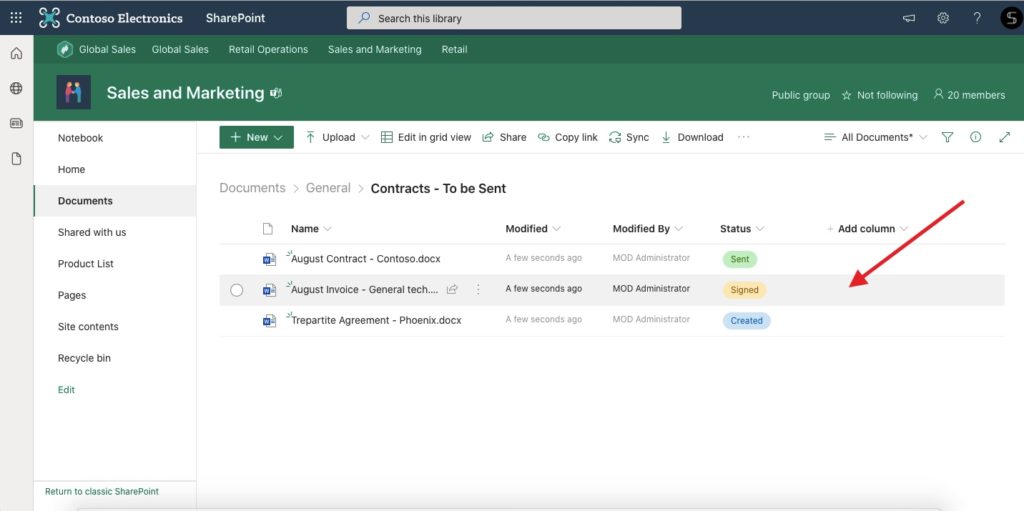
Then open Power Automate and start the scheduled flow. Choose the recurrence, for example, every day. This means the flow will run each workday. If the document status was changed on “signed”, it will be moved to another folder automatically.
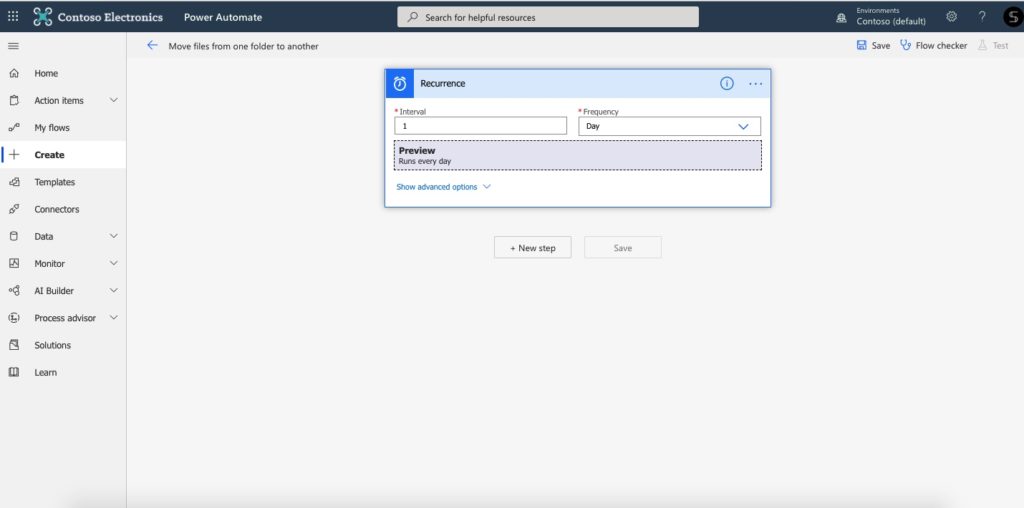
Then find the SharePoint action “Get files” and choose the site address and library name.
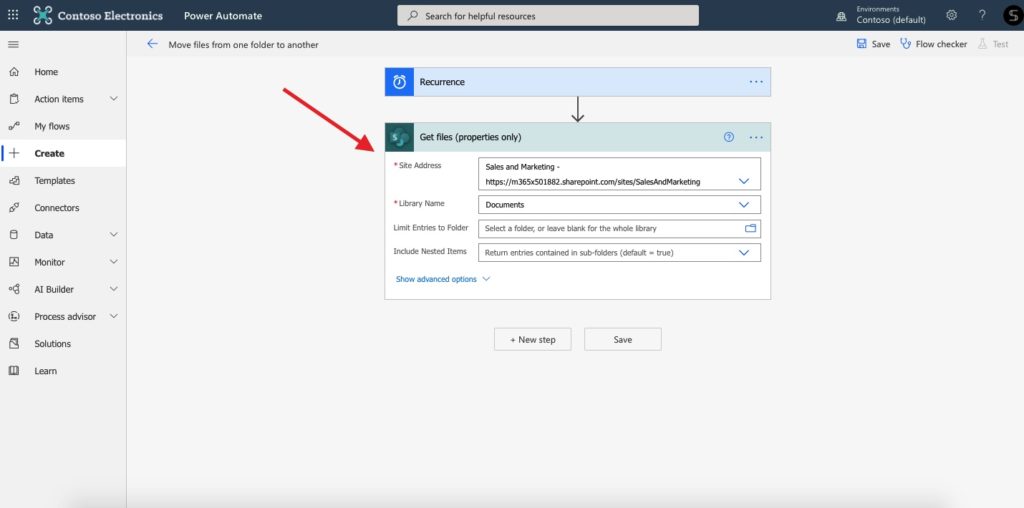
Now you should start new conditions. First, you will need to choose “Apply to each” and then start a new condition “Yes/No”. Here you set up a needed rule. In this case, we type “Status is equal to Signed”.
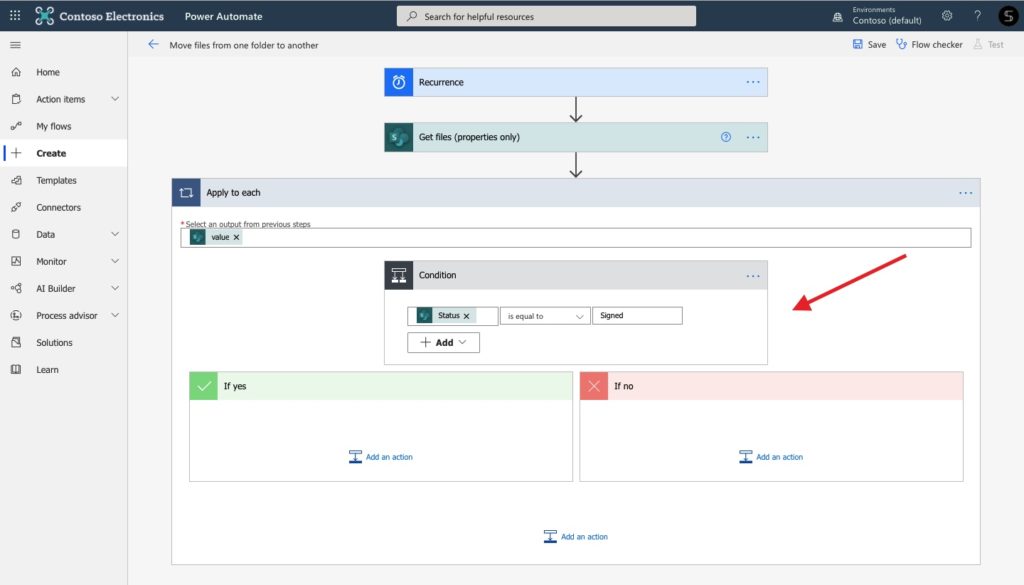
Then, “If yes” we add the SharePoint action “Copy file”. Here you should define the current and destination site address and define what the automation should do if another file already exists (copy with a new name, replace, or fail the operation).
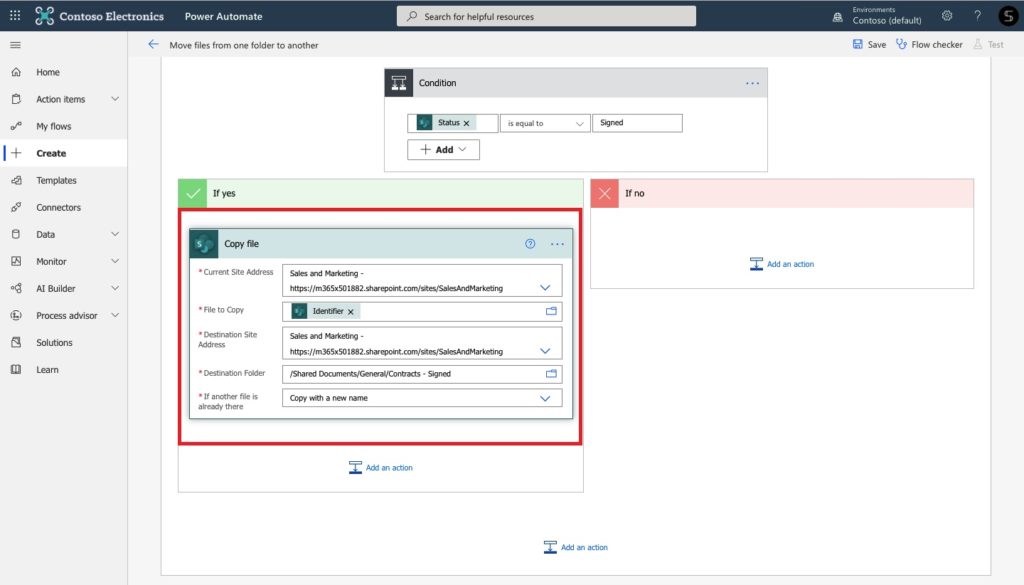
In addition, let’s delete the copied file to avoid duplication in your Teams environment.
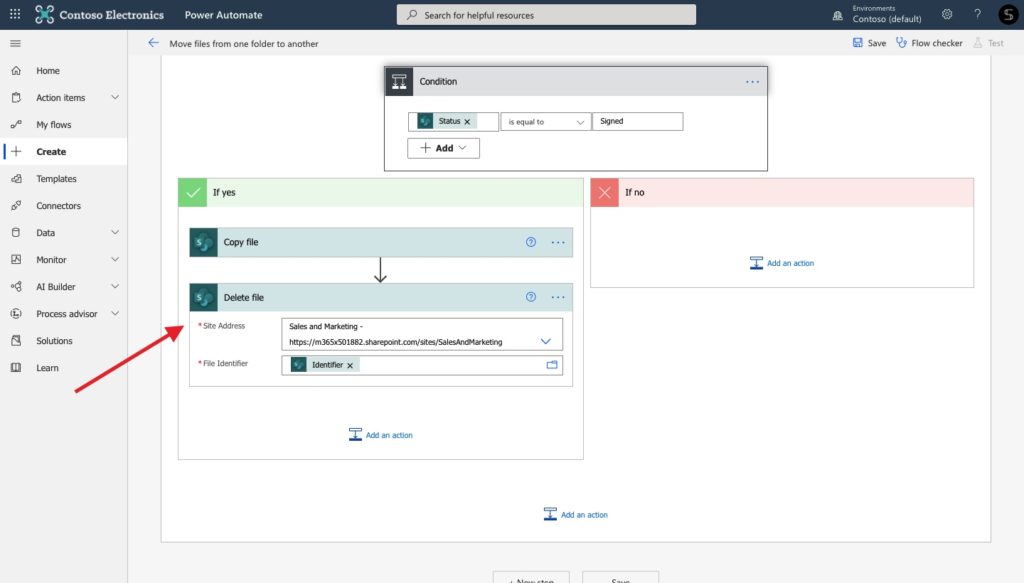
Finally, you can notify your team about the files that aren’t signed yet by adding the Teams action “Post a message”.
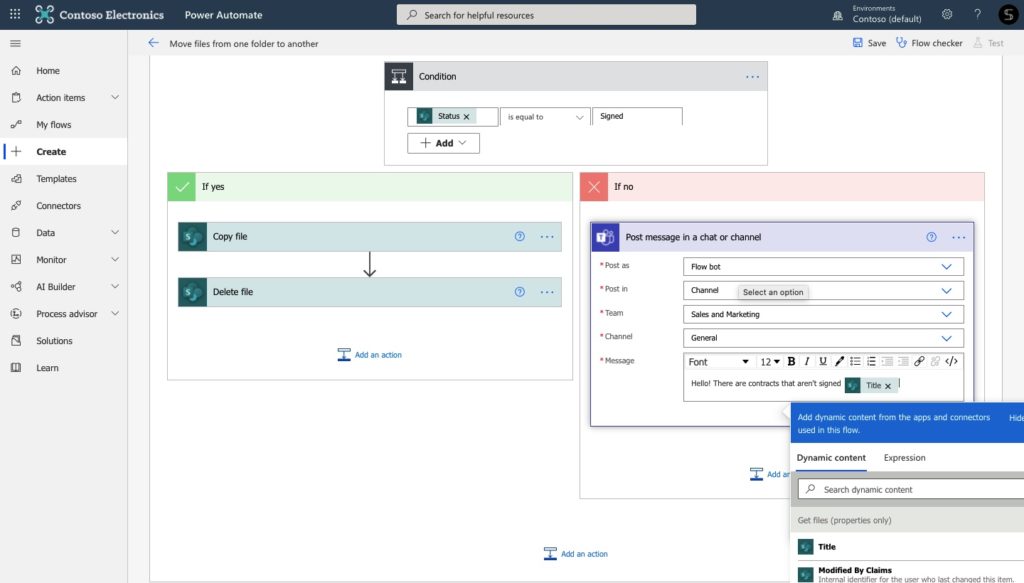
And it’s done! Now each time your colleagues change the document’s status, it will be moved to another folder automatically.
Integrate your emails with SharePoint and Power Automate
How many emails do you receive every day? Me personally, a lot! 😊 And often spam and sales offers are appearing together with some important messages from customers or colleagues. So how not miss important files and documents that customers or your team members may share with you via email? Well, you can build a Power Automate flow that allows you to automatically save the email attachments into your own document library. Let’s see how it works.
First, you will need to create a separate folder in your document library for email attachments that colleagues, and external agents share with you. Read here how to create different folders using the rules in Outlook.
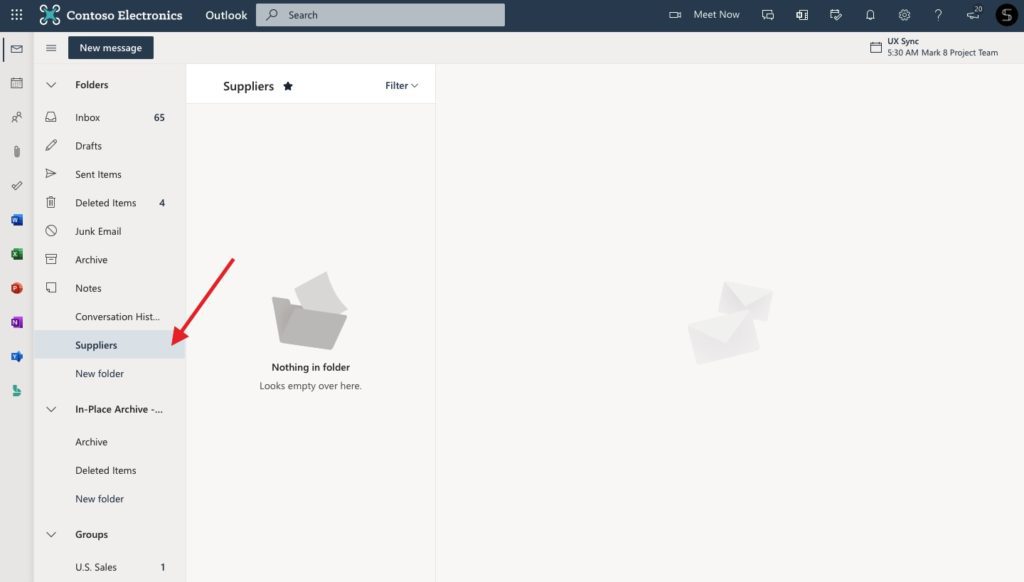
Next, open Power Automate and start a new flow. Choose the Outlook trigger “When a new email arrives”. Here you will need to define a specific folder in your Outlook and make sure you include in this flow only emails with attachments.
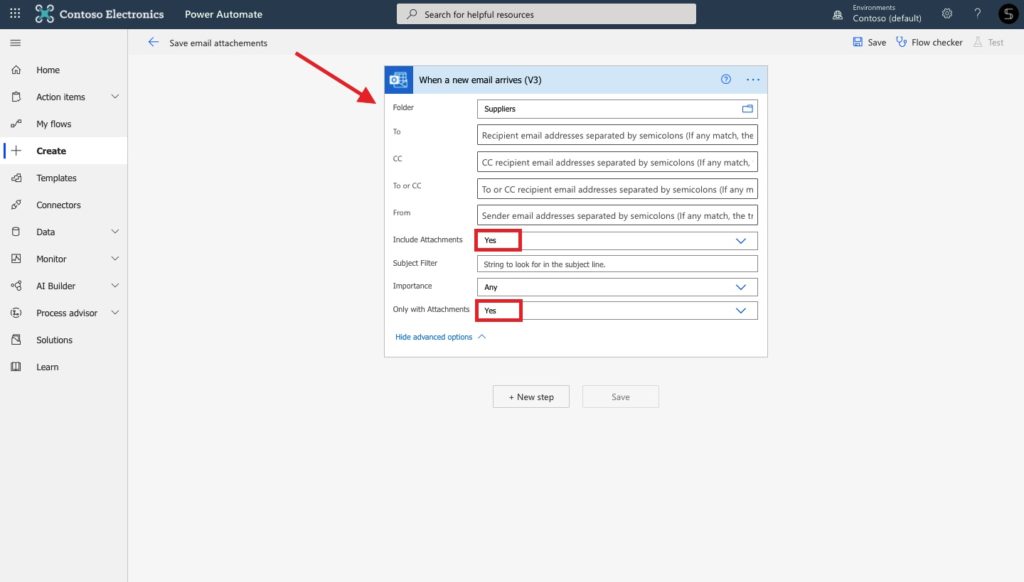
The next action is “Create a file” from the SharePoint connector. Here you should define the Site address (name of your team in Microsoft Teams) and the document library. In addition, add the file name and the content using the dynamic content from the Outlook attachments.
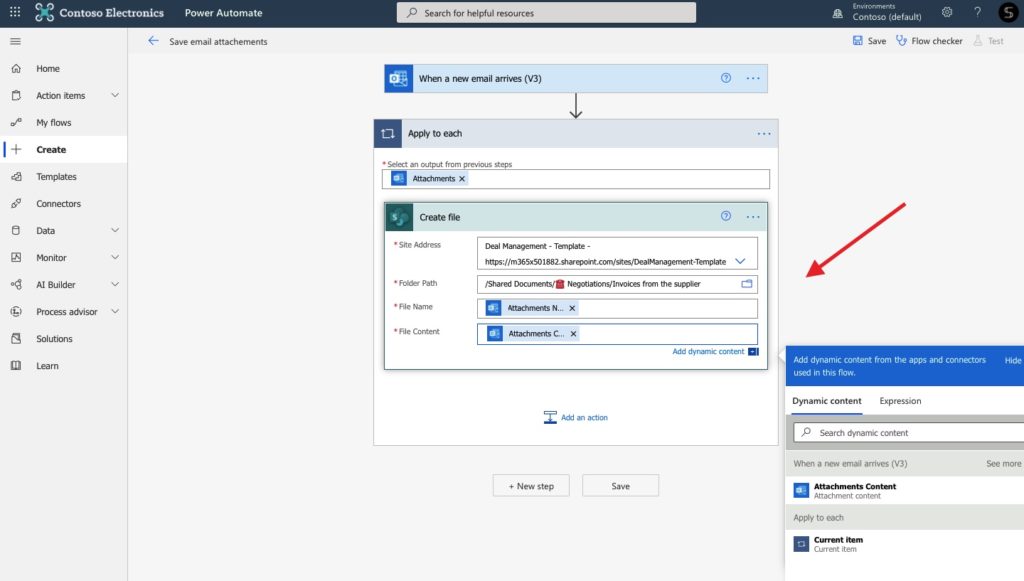
And it’s done! Now, each email that contains attachments that appear in your Suppliers Outlook folder will run this flow.
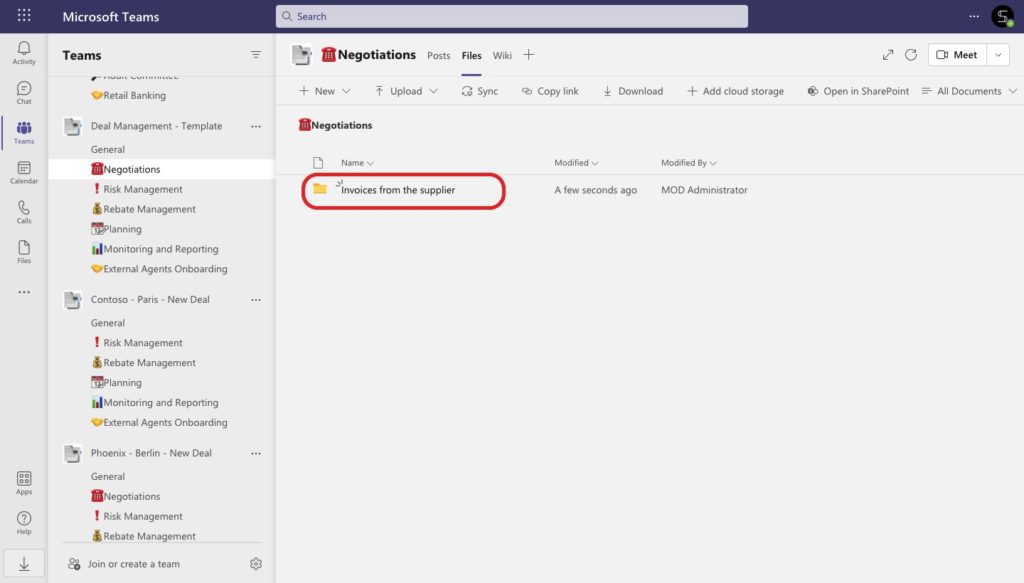
Now, there is no need to download files to your own device and upload them again into your Teams environment to share them with your colleagues. Automation will do it for you!
Automatically track files in Excel using the Power Automate
Now let’s say you’re a project manager, and you need to track all project documentation. So how not miss new files related to your project? Let’s say, your teammates upload the files into a separate folder in your team. And you will need to keep updated on each new file. With the next flow, you can track the documents your team members share using an Excel spreadsheet.
First, you will need to create a new Excel table with the columns Title and Date where you will store all information about newly created files.
Next, start an automated cloud flow and choose the trigger “When a file is created in a folder”. Then define your team’s name and the required folder where your teammates will share documentation.
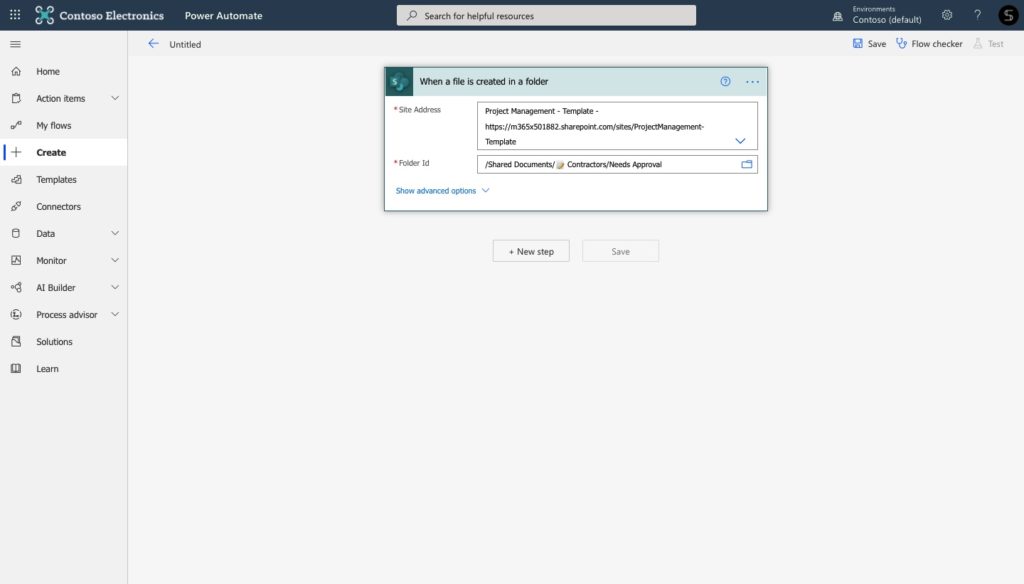
Then choose the Excel action “Add row into a table”. Here you should define the document library and the required Excel file. In addition, add the dynamic content to your table’s columns.
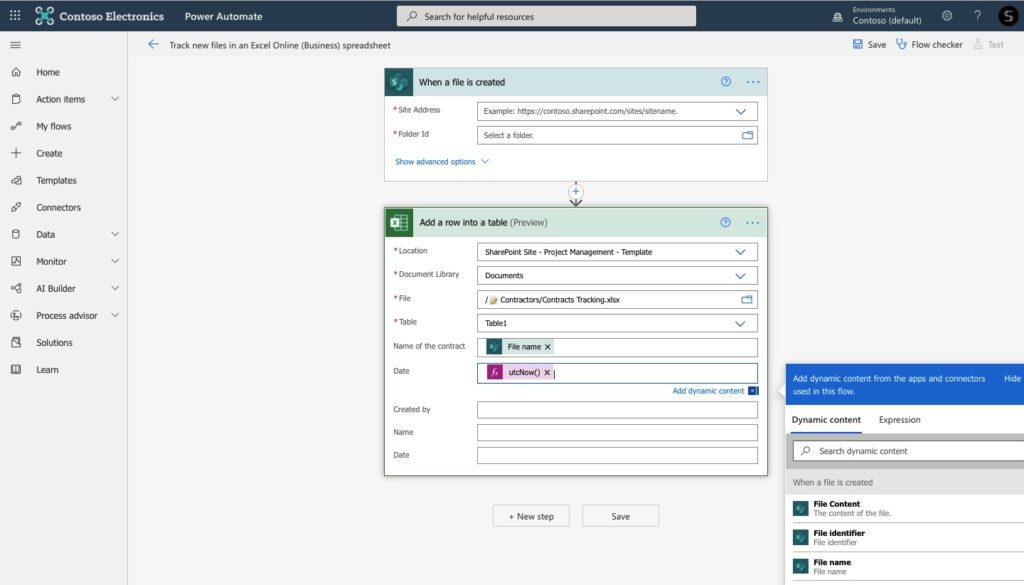
It’s done! Now each time your teammates create a new file in the specified folder, a new row in your Excel file will appear automatically.
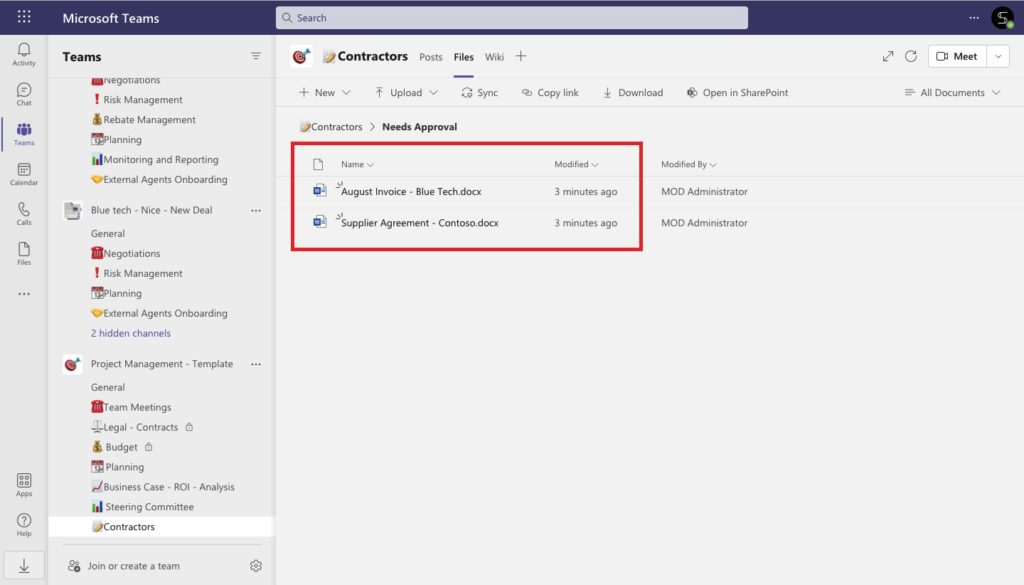
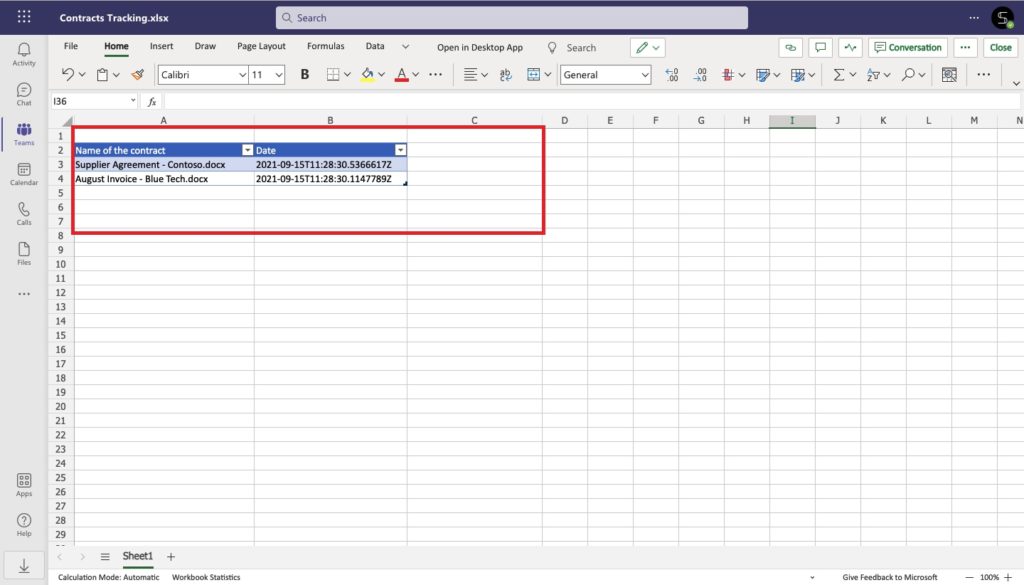
Structure your environment with Teams templates and file cloning
Finally, lets discuss how automation can help you in improving your collaboration across the entire organization.
Suppose you are a project manager, and you need to create a team for each new project. Then you need to fully customize this team to simplify your project team’s collaboration and make the project running successfully. It means you will need to create different channels, add team members, and integrate your everyday apps, such as Planner, SharePoint, etc. Moreover, there is essential project documentation that will help your team to collaborate on projects. For example, guidelines, milestone templates, codes of practice, and learning documentation. So, you will need to spend a lot of time creating this kind of team that can slow down your work processes. And what if you need to create dozens of these project management teams?
Create teams from the template with cloned files and folders
Well, we have a solution. With Collaboration templates technology, you can create fully customized teams from templates in just a few minutes.
As an Office 365 admin, you will be able to create your own Template Catalog where you can store the templates for each use case, including project management, sales deal room, department collaboration, and much more.
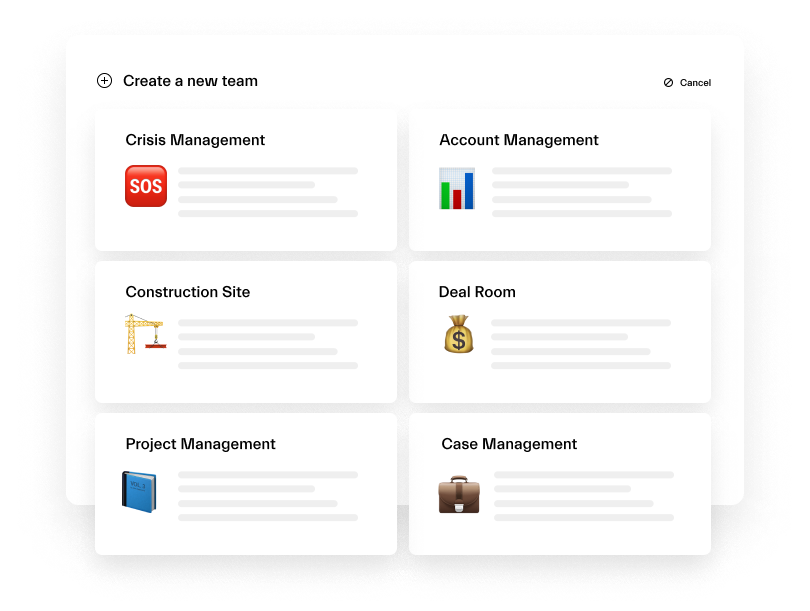
Learn how to define Microsoft Teams use cases
And each time your end-users need a new team, they should go to the Template Catalog, choose the right template and get a team with the pre-built content. This feature allows you to structure your Teams environment across the entire organization and get the same level of execution from one team to another.
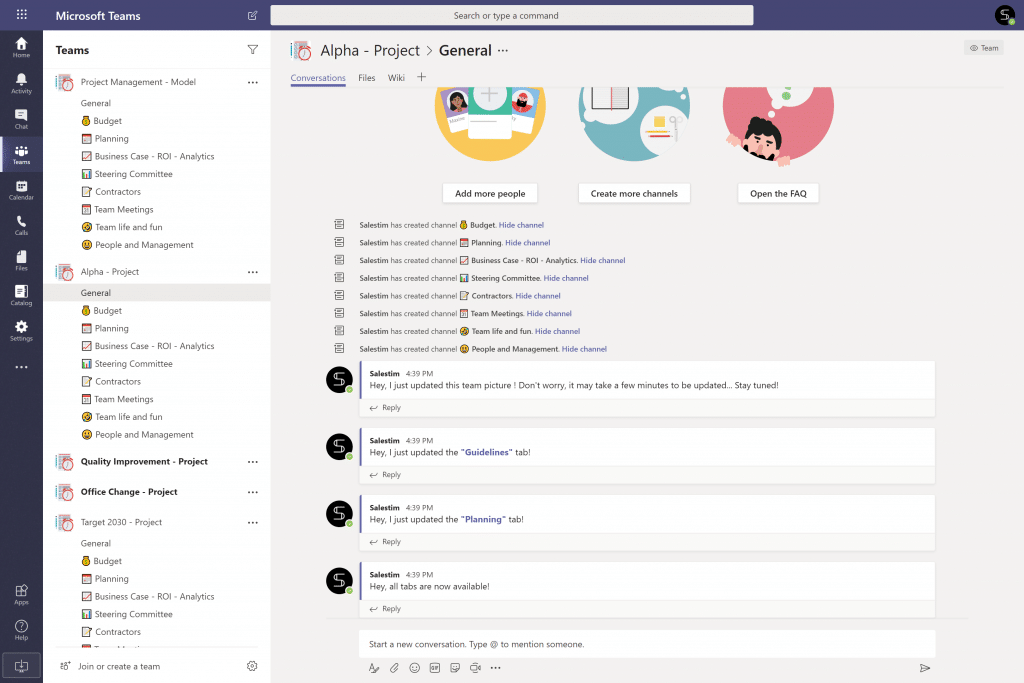
Build your first Microsoft Teams template
Moreover, a team will be created with channels, tabs with apps, and cloned files and folders. It means you will avoid mess in your document library by creating a pre-built file management system for your future project management teams. In addition, you will save your worktime as there is no need to look for and upload your essential files manually.
Finally, with the custom connector, you can create different teams from the template with document libraries that vary from one team to another.
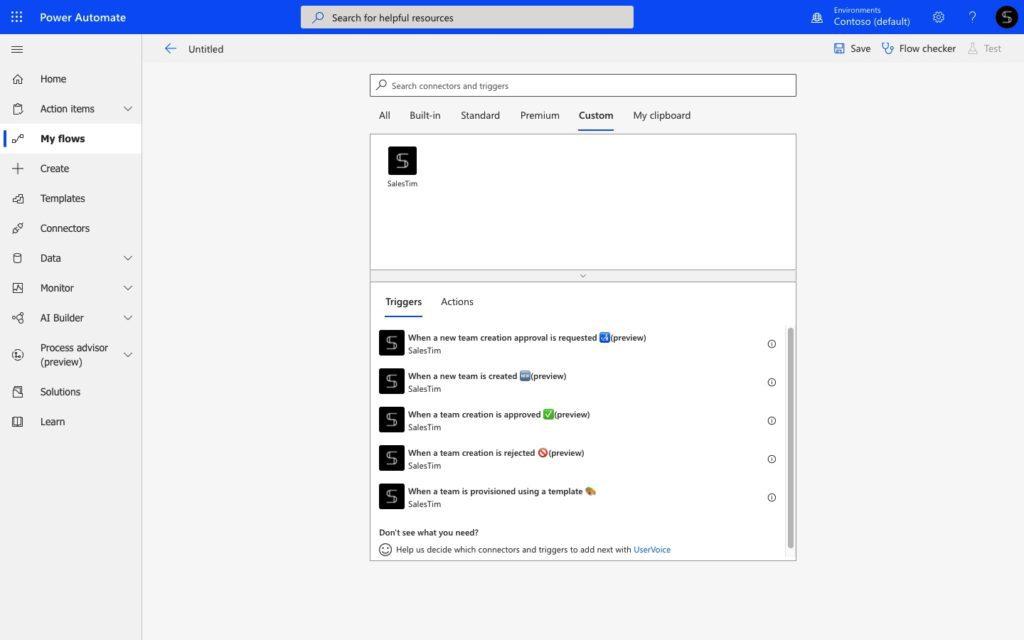
In this article we described how to improve your file management with Power Automate and Microsoft Teams.
Book some time with us to talk about your unique business case and will help you to improve your collaboration at scale!
